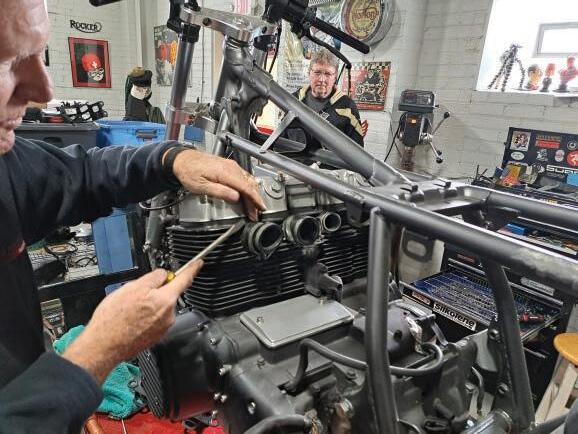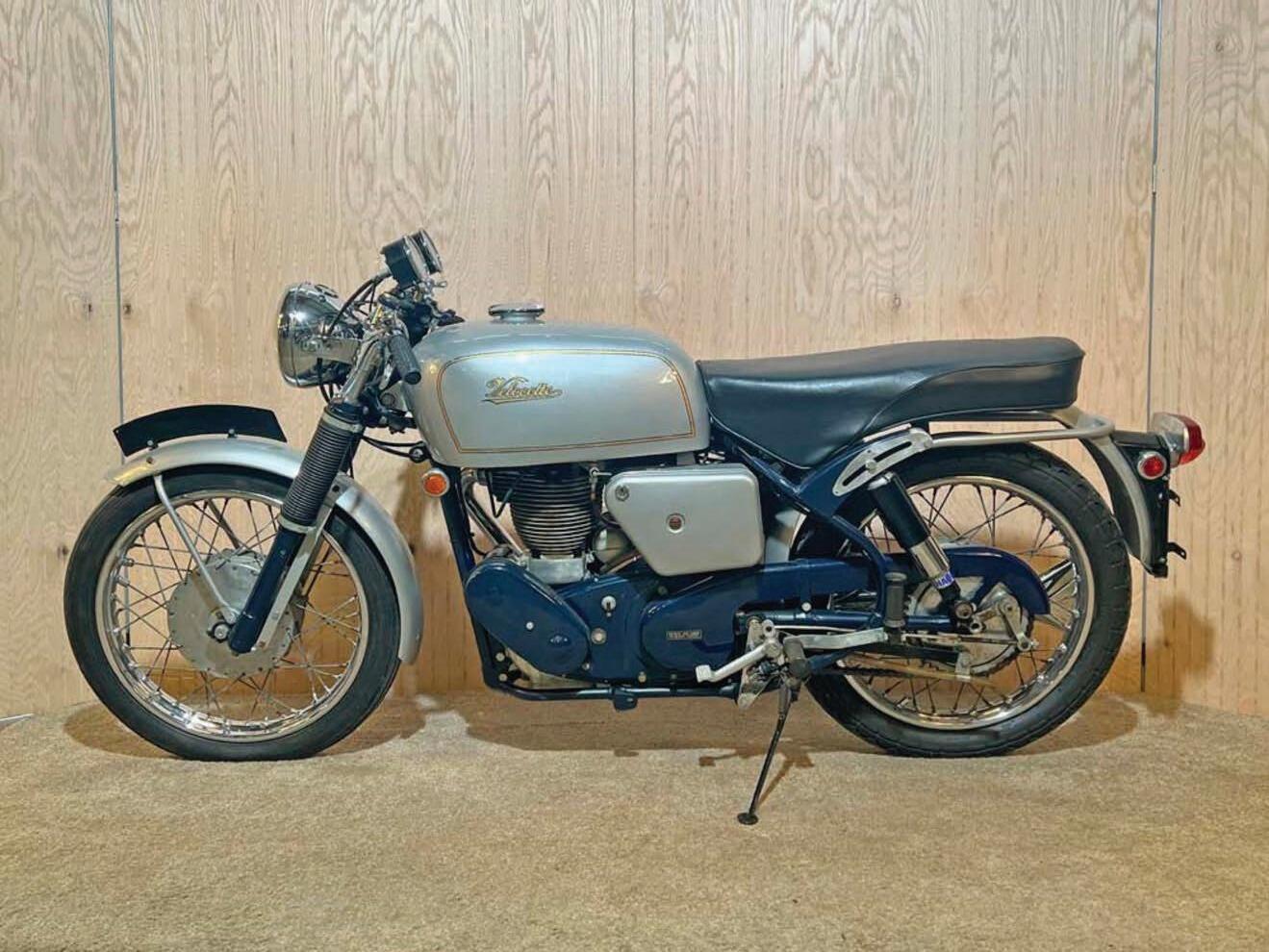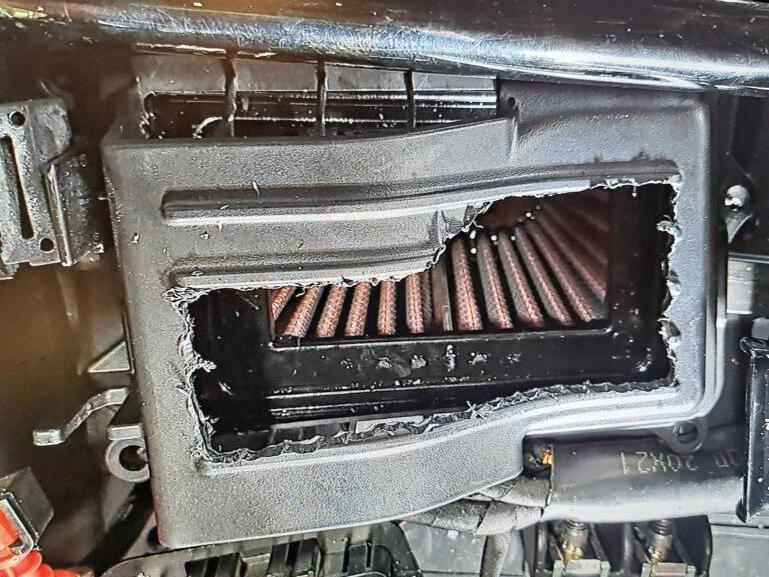
2 minute read
CR Tech FAT FEATHERBED MODERN TRITON Liner Notes

Story and Photos by Paul D. Stanstead
Advertisement
Prep work – it’s a task most mechanics loath to do, but ignoring it can bite us in the bum faster than a hungry rottweiler. Case in point, the alloy fuel tank on our Fat Featherbed modern Triton. Too little prep work and not allowing enough set-up time for the Por 15 tank liner to adhere properly to the inside surfaces has translated into a serious headache for the team.
Last issue, the failed liner was noticed by welder Kenny Munz at South Hills Cycle, who was repairing a tiny leak in the Tab II Classics Lyta sprint racing tank. Ridding the handmade tank of the errant silicone, which was threatening to find its way into carburetors and engine, was a matter of applying a dose of acetone to the tank and hoping for the best.
Cutting the bottom from the tank, scraping away the Por 15’s remains and hoping to rewelding it well enough to hold fuel is unlikely, so we picked up a gallon of ace- tone at the local hardware store.

The all-purpose thinner and cleaner is a staple of any house painter’s tool kit and was cheap at $14 per can. We poured it into the tank, left it to sit for 24 hours and then returned, eager as kids with a school science project, to see the results. We couldn’t have been more chuffed if our 6th grade model volcano spewed actual lava, as the acetone had managed to completely separate the tank sealant from the metal.
This proved that acetone is, indeed, a cureall for such problems, but we still faced the bigger issue: removing the sealant from the tank. Usually, Nick Coumos brings his handy fiber optic camera along which allows us to see into tiny, inaccessible spaces like the interiors of gas tanks. But Nick was busy babysitting his grandson, leaving us to improvise.
A solution occurred to us when sometimegarage helper, full-time pothead (and editor’s older brother) Aaron Seate revealed the set of long medical-grade hemostats that he carries at all times – for some unknown reason. The medical pincers allowed me to clamp onto the long thin strips of hardened plastic liner and slowly pull them from the fuel tank. (Who knew recreational marijuana paraphernalia could prove so practical?) After a good two hours of alternately shaking, yanking and scraping the failed sealant from the gas tank, we gave it a good shake to make sure nothing remained inside.
While Aaron kept me entertained by extolling the various virtues of homegrown vs laboratory strains of cannabis, I flushed the tank with petrol one final time to cleanse it. With the results piled up in a metal oil pan, it was astonishing to see how much Por15 had been floating around in there.
If so much as a sliver of this gunk had found its way into the combustion chamber, we’d be telling quite a different story. Once returned from babysitting, Nick observed that our mishap with the tank liner was one of many reasons he’d never utilize chemical sealants on any of his bikes. “There’s too much at risk if they fail and it’s just too difficult to get that stuff out of a tank if things go wrong,” he said. “A well-made or clean tank shouldn’t need anything inside of it except fuel.”
That said, it’s time to re-attach the fuel tank to the Triton and give her a go. What could go wrong at this point? CR











